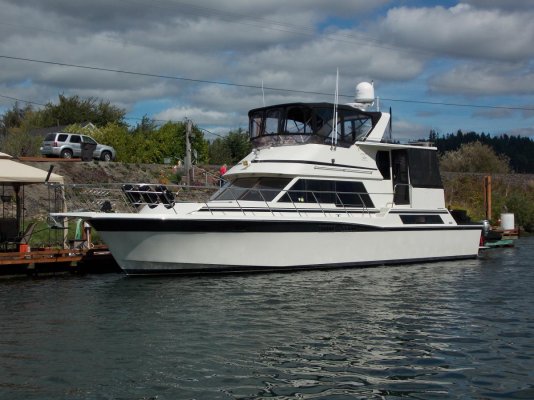Hi Warren. Well, more than meets the casual eye. In particular, each boat matches each individual's needs and wants. Nothing more. There are no "universal truths" in the boating world. If so, we'd all operate exactly the same boats. Obviously, ain't so. Some of us like to operate in the open air, some don't. Some of us like pilothouse vessels, some don't. Some locations promote open air operation, some don't. Some of us are sun sensitive, some aren't. Ad Nauseum.
And, some boats simply are designed as "flying bridge-centric" boats, and some are designed as "pilothouse (or saloon)-centric" boats. It's pretty easy to tell which are which, if you know how (and where) to look.
Size isn't a good indicator. I've owned 40' boats (a Pacific Trawler) which, while it had a flying bridge, was distinctly a pilothouse boat, particularly here in the PNW. All nav gear was in the house, all heating and air conditioning was in the house, access to the galley and head was in the house, the visibility was excellent, etc. Yes, it had a flying bridge, which could be fully enclosed if so desired, and all nav gear and HVAC could be duplicated topside. All at great expense, with no "value-added", at least to me. And that's the key. Value added to ME. Obviously, your mileage may differ.
I've also owned two significantly larger powerboats (a Canoe Cove (CC) 53 and a Tolly 48), both with flying bridges, and lower helm stations. As the CC had a particularly comfortable lower helm station, with all the aforementioned amenities, I very seldom operated from the flying bridge, even in Southern California, where I operated for many, many years, even when I thought I was invincible to the evil of skin cancer.
My latest boat is a Tolly 48. While it is designed with a lower helm station, there is no provision for lower helm seating. I either use a portable helm seat, or stand up, should the weather preclude operation from topside. It is assuredly a "flying bridge-centric" boat, by design. So, to retain comfort and safety while almost universally operating my Tolly from the flying bridge has required significant expense to fully enclose the bridge, and duplicate nav equipment topside as well. And it means using the head, or grabbing a sandwich, or looking up a cruising guide reference, etc. requires a relief helmsman to execute. And looking through plastic. You want a Tolly 48? You'll look through plastic.
All boats are a compromise. And only yours to make.
Regards,
Pete

